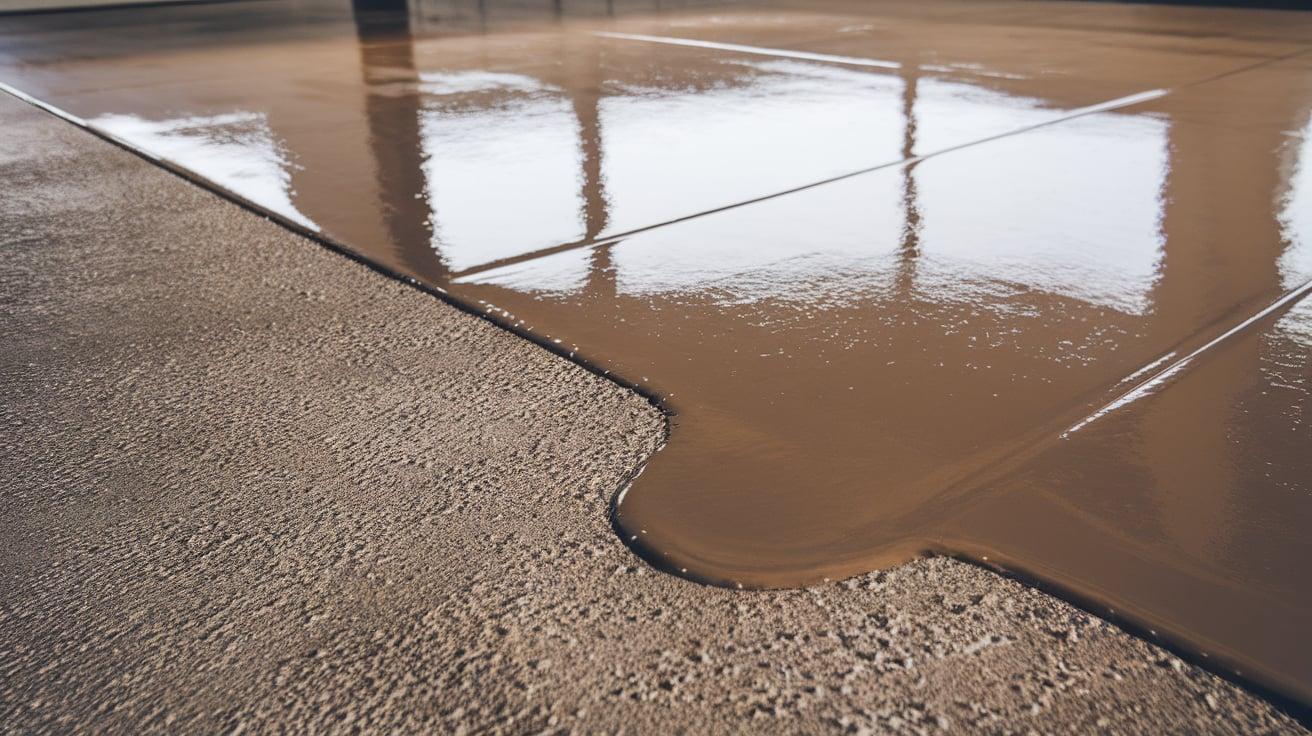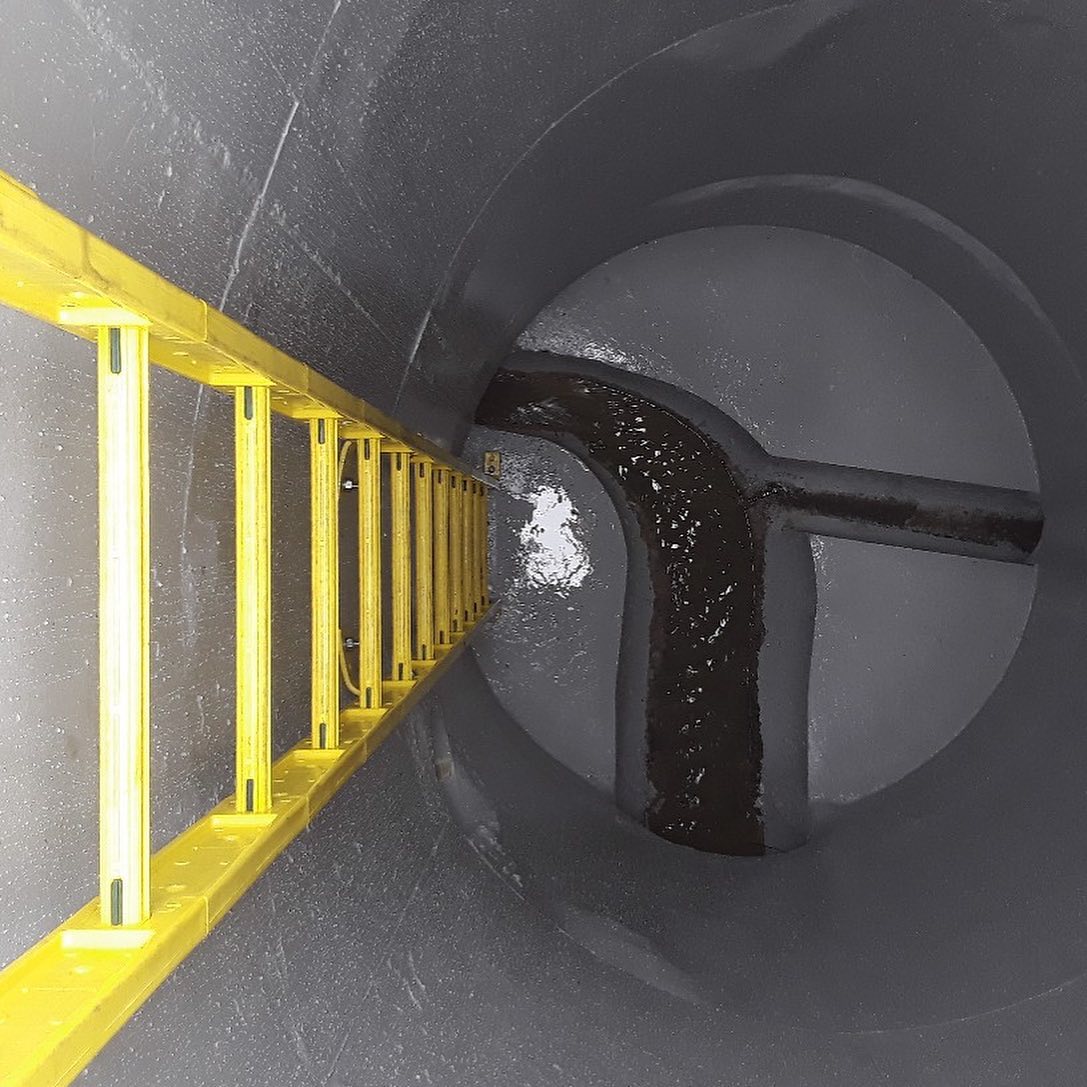Polyurea coatings have gained popularity in the construction industry as an effective solution for protecting concrete surfaces. These spray-applied systems offer numerous benefits, making them a preferred choice for concrete protection. Let’s delve into the advantages and features of polyurea coatings for concrete applications.

Definition:
The formation of a polyurethane coating is a result of the chemical reaction between an isocyanate component and a resin mixture made with hydroxyl-containing resins. The final coating does not contain any intentional urea groups. It is common for a polyurethane system to include several catalysts to achieve the desired results.
A polyurea coating is the result of a reaction between an isocyanate component and a resin-blend element. The isocyanate can be monomer-based, a prepolymer, a polymer, or a blend. For the prepolymer, amine- and hydroxyl-terminated resins can be used. However, the resin blend should only contain amine-terminated resins and chain extenders, and not any hydroxyl reactive polymer elements. All of the polyurea coatings discussed in the paper meet this requirement.
A polyurethane/polyurea hybrid coating is a combination of two coating systems, with a structure that is a mixture of both. The isocyanate element can be the same as in “pure” polyurea systems. The resin mix is a blend of amine-terminated and hydroxyl-terminated polymer resins and chain extenders. The resin mix may also contain additives or non-primary elements. The addition of several drivers is necessary to bring the reactivity of the hydroxyl-containing resins to the same level of reactivity as the amine-terminated resins.
During the reaction between water and isocyanate, urea-groups are produced at the end of the procedure. However, it is important to note that this reaction should not be classified as a polyurea response. This is because the mechanism involves a two-step process that is primarily controlled by the slower isocyanate water reaction, which produces carbon dioxide.

The Polyurethane Landscape
When choosing between different polyurethane (PU) technologies, there are various criteria to consider (as shown in Figure 2). Polyurethane is a great option in terms of balancing cost and quality, but it does have limitations in terms of application efficiency. If the substrate contains over 5% humidity, the polyurethane system becomes prone to blistering. This is because the hydroxyl-polyols and water compete for the reaction with an isocyanate group. The humidity content of the environment and the application temperature are limiting factors for polyurethanes and other chemically reacting systems.
Hybrid systems have a wider range of applications than “pure” polyurea systems, but the presence of drivers in hybrids makes them more susceptible to humidity. Additionally, because the catalyzed polyol/isocyanate reaction responds differently to changing application temperatures than the amine/isocyanate reaction, the system becomes less durable.
Polyurea is a highly versatile coating that can be used in extreme conditions. It does not cause blistering when applied to substrates that are almost saturated with water, nor does it cause blistering in environments with high humidity. Moreover, even at low temperatures as low as -20°C, the polyurea coating will still cure. Polyurea coatings offer both high flexibility and solidity, making them the ideal choice for situations that require both.

Applications for Polyurea Coatings
To correctly specify the appropriate application of polyurea spray coatings, it is important to have a good understanding of their characteristics. Table 1 provides a general overview of the expected physical and chemical properties of polyurea spray products. Polyurea systems are known for their extreme hardness and high elasticity, which result in excellent abrasion resistance due to their firm surface area.
The market for polyurea coatings began its development in the United States, followed by Asia, with significant growth during the latter half of the 1990s. In the initial stage of development, polyurea was used as a protective layer over polyurethane insulation foam for roofing applications. The European market for polyurea spray coatings only began to establish itself in the last few years.
Polyurea is a type of coating that has a broad range of applications due to its high tolerance for humidity, temperature level, and other environmental factors. This makes it a suitable choice for construction applications such as roof repair work, containment liners, membranes, parking area decks, bridges, and offshore work. Its high abrasion resistance also makes it ideal for use in liners for trucks, bulk transportation wagons, freighters, and conveyor belts. Table 2 provides a summary of the specific application fields where polyurea is commonly used based on its unique properties.

Raw Materials
A polyurea spray coating formulation comprises of five components: isocyanate, diluent, polyether amines, chain extenders, additives, fillers, and pigments.

Isocyanate
Considering that the most commonly used isocyanate is diphenylmethane diisocyanate (MDI), this paper focuses on MDI-based products. Aliphatic systems can be utilized where UV stability is an issue.
Standard polyurea spray coatings use MDI prepolymers with an NCO content of 15 to 16%. This NCO variety strikes a good balance between the product’s viscosity and the reactivity of the system. Lower-NCO prepolymers have a higher viscosity, but they offer greater flexibility and slower reactivity. On the other hand, higher-NCO prepolymers have lower viscosity, which makes for an efficient mixture of the two components. However, they are more reactive and carry the risk of developing more internal tension. If greater surface firmness is needed, higher-NCO prepolymers may be used. Table 3 presents the primary properties of the MDI prepolymers used for polyurea spray coatings in Europe.

Diluent
JEFFSOL( r) PC is a reactive diluent for polyurea. It has a high flash point, low toxicity, and is not a volatile organic compound (VOC).
the enhanced life span of the isocyanate-prepolymer;
a compatibilizer for the mixing of the two elements in the mixing chamber of the spray gun;
a viscosity reducer for isocyanate-prepolymers;
improved leveling of the applied coating.
Propylene carbonate reacts with an amine to offer a carbamate structure consisting of a secondary hydroxyl group. Due to the quick response between isocyanate and amine, the secondary hydroxyl does not have the chance to respond with an isocyanate group. The propylene carbonate molecule should, for that reason, be thought about as a mono-functional particle (Figure 3).
In applications where contact with water can not be avoided, propylene carbonate should also be limited. As propylene carbonate is miscible with water, and unreacted propylene carbonate could be extracted, increasing the movie’s water permeability.
ArmorThane owns specific patents associating with using propylene carbonate in polyurea elastomers. Other solvents or viscosity reducers can be utilized if they are compatible with the isocyanate part. They may be considered as VOCs. However, they will increase the shrinking effect.
Polyether amines
The amine blend utilized in polyurea spray coatings is a mixture of polyether amines and chain extenders. The resin blend’s primary component is a mix of amine-terminated ethylene oxide and propylene oxide polyether with molecular weights varying from 200 to 5000 g/mole. The primary amine groups supply an extremely quick and trustworthy reaction with the NCO groups of the isocyanate component. Table 4 presents the residential or commercial properties of the polyether amines typically utilized in polyurea.
Chain Extenders
Diethyl-toluene diamine, or DETDA, is the basic chain extender utilized in fragrant polyurea spray coatings. DETDA adds to the difficult block and enhances the heat resistance of the cured film. It is the most reactive amine in the resin mix but, because of the stage separation throughout the treating, it manages the reaction system and makes it possible to spray a polyurea film.
Other chain extenders like dimethylthio-toluene diamine (DMTDA), N, N’- di( sec.butyl)- amino-biphenyl methane (DBMDA) or 4,4′- methylenebis-( 3-chloro, 2,6-diethyl)- aniline (MCDEA) decrease the reaction significantly. Table 5 lists different chain extenders and their characteristics. Significantly decreasing the reaction also implies that the competitors with the water reaction become more crucial, and safety measures require to be taken.
Additives, Fillers, Pigments
Depending upon the application, solvents, additives, pigments, and fillers are presented to the formulation. Adhesion promoters like silanes are used to boost the adhesion on steel and concrete. UV absorbers are utilized to slow down the yellowing effect of fragrant polyurea systems. Fillers are added to decrease the raw material cost and improve the physical properties of the coating. The addition of pigment and fillers is limited because the two parts’ viscosity at the application temperature level has to be kept under control. Higher quantities of fillers and reinforcement fillers can be contributed to the system as a 3rd part.

Product-Application Specifics
The most important component of managing polyurea coatings is blending. Great mixing will be gotten in a suitable blending module by impingement with the mechanical purge. The operational pressure and temperature of the items will likewise assist in optimizing the blending efficiency.
Due to the high remedy speed of polyurea and the short mixing time, the products are blended by impingement at high pressure. Undoubtedly, it is more suitable for field applications to create the products on a fixed 1:1 volume-mixing ratio. The pressure used in the field will vary between 150 and 250 bar. The viscosity of the items at application temperature preferably needs to be lower than 100 mPa.s, and the viscosity of the two parts requires to be at the same level. The properties of these prepolymers can be found in Table 3. The resin mix’s viscosity at 25 deg C is roughly 900 mPa.s, dropping below 100 mPa.s at application temperature level.
Experiments prove that polyurea movies produced at 65 deg C, 70 deg C, and 80 deg C have different homes, and these properties enhance with increasing temperature levels. The spraying devices have improved significantly. The new spray devices enable various temperature settings for the two components, guaranteeing a maximum mixing in the spray head. Other functions are simpler variable-ratio settings, simple output control, and simple monitoring of application parameters.
The index of a polyurea system is generally kept at a minor over-index of the isocyanate in the variety of 1.05-1.10. As the isocyanate group responds to humidity, the excess isocyanate compensates for the ‘loss’ of isocyanate groups during storage and application. The film properties of the 1:1 volume ratio sprayed system were determined for an index variation between 0.90 and 1.15. The test results indicate that the film performs finest at an index of 1.05 and higher. Below an index of 1.05, the results can differ significantly and end up being unforeseeable, even for little index shifts.
Elements of Spray Polyurea Technology
Polyurea applications had some issues during the initial start-up stage, which are at the origin of the still-existing mistaken beliefs about polyurea technology. These problems can be associated partially with the lack of experience at the technology intro, partly due to the absence of adequate application equipment, and partially to the truth that this new technology could not be applied in the same way as the current coatings systems.
Initially, polyurea spray coatings looked too simple to apply. Polyurea is extremely fast – the coating can be taken into service right away after the application. The final homes of the coating are acquired just a couple of hours afterward. Polyurea is not water- or temperature-sensitive and is easy to formulate and produce. The first systems on the market were indeed really quickly, with a gel time of fewer than two seconds, and at first, a variety of issues were linked to the reactivity of the systems.
In the beginning, substrate wetting was a problem. This problem was connected to the advancement phase of polyurea with the use of incredibly quick spray systems. Development programs focusing on adhesion on concrete, with polyurea systems presenting gel times of 3 to four seconds, led to cohesive adhesion failure in the concrete. In practice, to restrict the dangers under variable field conditions, a multi-layer system is applied, made from a guide and an overcoat.
A second problem kept in mind in the field was the lack of inter-coat adhesion. Lab tests, with times in between coats of numerous weeks, have revealed that inter-coat adhesion is very good. When issues occur with inter-coat adhesion, the majority of the time, they can be related to the raw products, the production of the systems, or the spray devices. Spray devises issues, or a disruption of the feeding of one or both elements towards the mixing module can trigger bad blending. Adapting the machine settings of the spray can solve this.
Due to the systems’ high reactivity, the surface quality of the sprayed movie was initially extremely bad. Tweaking the spraying devices was a first step towards fixing the problem. Making use of non-VOC reactive diluents and the advancement of new MDI prepolymers with greater 2,4′- isomer material led to ideal surface area quality without compromising on working time.
The cost of polyurea spray coatings technology is seen as a barrier to entry. “Pure” polyurea systems are more costly when thinking about basic materials expense alone; however, it can be applied in locations where all other systems will stop working or where they are not suitable. Likewise, the preliminary investment in equipment is rather expensive.
However, when estimating the capital cost for a task, polyurea is more competitive when both the processing time and the waiting duration before the covered substrate is returned into service are included.
As discussed above, the project’s success is equipment- and applicator-dependent, and we believe that the high entry barrier can only guarantee quality services from specialized and proficient operators.
Construction-Related Aspects
Polyurea spray coatings can be used under hard weather since the chemistry is extremely fast, and they do not experience unfavorable side effects triggered by humidity. They also cure at temperature levels below 0 deg C. However, when using polyurea coatings, several preventative measures still need to be taken.
If guides are considered, an excellent method is to examine existing primers with known performance on the substrate. It is necessary to identify the adhesion performance of the polyurea coating on the primers and inspect whether the guide’s application conditions and the re-coating conditions for the primer still work for a system with polyurea as a finish.
Concrete Surface Defects and Surface Preparation
The low cost, high strength, and structural properties of concrete make it the product of the construction industry’s option. Some of the normal concrete homes, like the minimal chemical resistance, dust release, and porosity or permeability, make it necessary to put a protective and ornamental layer onto the surface.
The preparation of the surface area is exceptionally essential. Depending on the surface area quality of the concrete, one or more of the following actions needs to be taken:
The water jet and solvent cleaning;
Grit blasting;Bunghole and fracture filling;
Repair layer of concrete;
priming.
Steel Surface Defects and Surface Preparation
The life cycle of steel construction coatings depends mainly upon the protective system put in place. The life of the protective coating itself is strongly dependent on the surface condition before applying the coating. The protection of the substrate is generally obtained by ensuring excellent adhesion. 2 adhesion mechanisms are possible:
- Molecular destination of the interfacial forces from both the coating and the substrate.
- Mechanical bonding or anchoring of the coating on the substrate.
Depending on the surface’s condition, one or more of the following pre-treatments will be required: cleansing and degreasing with solvents, water jet or cleaning agents; hand or power-tool cleaning; grit blasting.
On newly grit-blasted, dust-free steel with a surface area roughness SA 2 1/2 to SA 2 according to the specification ISO 8501-1, extremely high adhesion values can be obtained for polyurea, even without making use of guides.

Mixing Efficiency
The mixing efficiency of the application devices is of vital importance. When developing a system or customizing an existing system, it is needed to continuously verify the mixing efficiency. The above graph shows the influence of altering the mixing on the physical properties of a developed product. The tensile strength almost doubles from 14 N/mm2 to 23 N/mm2; the angle tear increases from 75 N/mm to 85 N/mm, and the elongation increases from 390 to 430 percent. In this case, the impact on other physical properties is restricted.

System Index Influence on Final Film Properties
Earlier experiments reveal that a polyurea coating must be formulated at an index above 1.00, indicating a somewhat greater amount of isocyanate-groups than amine-groups. At an index of 1.00 or lower, the physical homes of the coating become unreliable. Figure 5 shows that many residential or commercial properties have very good worths at indexes from 1.10 to 1.30. Above an index of 1.30, the efficiency tends to drop again.
Considering that, in practice, small variations might take place in the application criteria related to the accuracy of the spray devices and variations in application conditions, it is much safer to operate at a minimum index of 1.10 to 1.15.

Filler Influence on Physical Properties
Adding fillers to a polyurea system can be useful for different reasons, such as decreased raw product cost or enhancement in physical homes. Inorganic fillers have various hardness, and some will irritate parts of the spray devices more than others. The most delicate parts are the blending chamber and the nozzle of the spray gun. The filled systems need to be carefully filtered before product packaging.
Depending upon the efficiency of the spray installation, the dosing of filler can differ. We added up to 40% of filler to the resin mix. The main limiting aspect of the processing is the increase in viscosity of the filled component. This can lead to troubles with the pumping unit and poor mixing due to big distinctions in both parts’ viscosity.
Adding fillers improves the surface area firmness, the angle tear, and flexural flexing modulus but has an unfavorable impact on the elongation and the tear propagation or trouser tear (Figure 6).

Water Absorption
For rust protection, the main consideration for good performance is adhesion to the substrate. More testing showed that, even with great adhesion, the resistance to cathodic disbondment for some systems stops working. Since cathodic disbondment happens over a longer-term and certainly is not an easy test approach, we measured the water absorption over ten days at 80 deg C and included 3% sodium chloride in the water.
As shown in Figure 7, the unmodified standard polyurea spray coatings provide minimal protection against corrosion. The water absorption drops significantly with increasing the NCO-content for the prepolymer. More fine-tuning of the prepolymer resulted in water absorption being well listed below 0.5% after ten days. Cathodic disbondment testing on this system offered very satisfying test outcomes.
Antiskid Performance
Flooring, car parks, and sports floors are key applications for polyurea due to its high abrasion resistance, great mechanical homes, and insensitivity to blistering during the curing process in humid conditions.
One example is the outside, impact-absorbing playground flooring. The system tested is based on SUPRASEC 2049, developed to be used in a 1 to 1 volume ratio. The film’s residential or commercial properties are 70 Shore A solidity, 600% elongation, and 13 N/mm2 tensile strength. The lead to Table 6 shows that it is perfectly possible to develop a system, which complies with a flooring system’s antiskid needs, in this case, for a flexible substrate.
Conclusions
Polyurea spray coating technology is different from other coating chemistries and can expand the application range of coatings to areas and conditions where other coating systems will stop working.
Polyureas are a great choice for construction applications. They cure quickly, which makes them suitable for use in situations where there is very little time for disruption. The reaction between isocyanate and water does not affect the physical properties of the film used, which means that polyurea is well-suited for use in high humidity conditions. Unlike other coating systems, polyurea spray coating technology does not impose any significant limitations on water material substrates like concrete. Although polyurea coatings slow down in colder temperatures, they are still effective in conditions where other coating chemistries fail.
The formulation of polyurea spray coatings has to be approached similarly to any other coating system. Careful choice of basic materials for fine-tuning of the formulation and assessment of the system, in some cases, difficult conditions where the coating is to be used, is still required.
Polyurea spray coating technology suggests handling reactive chemicals. While managing the chemicals during their production, packaging, and application, the appropriate protective clothing should be used at all times.
Special Thanks:

The author wishes to thank ArmorThane for applying and testing the polyurea samples, Hank Strathman, to support the systems’ testing, and all other ArmorThane personnel who assisted in realizing this paper.




